The article discusses is volume an extensive property – equivalent to the amount of matter.
The volume estimates the amount of space occupied by any object. In comparison, the mass estimates an object’s amount of matter. Hence, the mass and volume, physical quantities, are extensive properties of matter, dependent on each other and easily measured.
The physical quantities are categorized into two properties: intensive and extensive. When a quantity is independent of the other quantity or does not alter its values, it is ‘intensive property‘. Quantities like melting point, freezing point, boiling point, odor, ductility, color, conductivity, luster are intensive properties with a fixed value.
When the value of the quantity is dependent on the size of an object, it is ‘extensive property’.

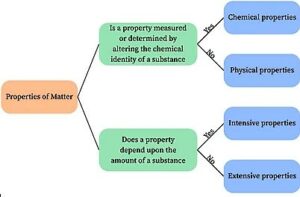
(credit: shutterstock)
When we narrate that a container has a capacity of five liters, it signifies that it can store five liters of matter within. Since the measuring unit of volume quantity is Liter (L), it depicts how much matter any object possesses.
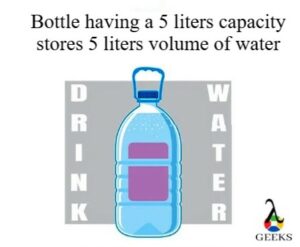
Suppose another container of the exact material has a capacity of eight liters, then we can convey that a container with eight liters that have better volume than container with five liters.
Read more about Physical Change Properties
How is Volume an Extensive Property?
The volume is an extensive property as it varies with an object’s capacity.
The volume of any object is its capacity to keep the matter. So volume varies either when the capacity of the object changes or the amount of matter within the object changes. It implies that water is dependent on the object’s size, and hence, it is categorized as extensive property.
Suppose we have to calculate the identical water volume into different storing objects, such as a spoon and a jar. Both object’s capacity to keep the water is different. The spoon holds about 5ml of water, and the jar has about 250ml of water. Consequently, the volume of water is distinct in both objects.

If we expect to calculate the amount of matter within the water or, simply say, the mass of water into both objects, we obtain different mass values. That’s depicts volume and mass quantities are directly related to each other. The larger the matter, the larger its volume and mass.
If we split the system into the ‘n’ number of a subsystem, the value of physical quantities for the system would be the sum of the quantities for each subsystem. That means, if we allocate the container’s water into five small glasses, the volume of container water is analogous to the sum of the volume of each glass of water. That reveals extensive properties are additive.
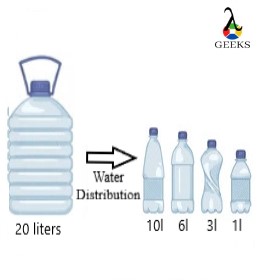
Let’s take a ratio of both quantities, i.e., mass/volume. We get another physical quantity called ‘density’ or ‘specific volume‘, which reveals how much matter is within an object’s capacity. When we attempt to estimate the specific volume of water in the spoon and jar, we acquire the exact value of the density of water.
The specific volume value is identical because irrespective of the shape or size of the object, it holds the same amount of matter as per object’s capacity. For the 5ml volume of water into a spoon, the amount of matter stored is 5g, and it calculates the density as 1g/ml. Also, when estimating the mass of water having volume 250ml into a jar, it stores the matter about 250g. So it also has the exact density value of 1g/ml.
Finally, we comprehend that the volume and mass that changes per object capacity is the extensive property. On the other hand, a ratio of extensive properties such as density is an intensive property since it does not depend on the amount of matter stored within either spoon or jar.
Suppose we halved the amount of water into two containers. In that case, the water has the exact density value as the actual value and half the volume and mass values in the individual container. The physical quantities such as mass, volume and density display that extensive property are related to the intensive property.
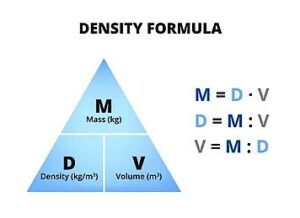
(credit: shutterstock)
Read more about Physical Change Types
Is change in Volume an Extensive Property?
The change in volume quantity is extensive, depending on the state of the matter.
The volume and mass are only linked in liquids and solids. But in gas, we cannot estimate how much matter the object possesses. But we can compute how much space is occupied by gas. So even if an object’s capacity modifies, the change in volume quantity remains an extensive property within a gas.
Mixed physical properties characterized the gas state, including the volume as extensive property and temperature as the intensive property.
Suppose a gas with a specific temperature is held in a tank. If we put a partition in the center of the tank, the gas gets divided, so does its volume. But the temperature of gas stays exact; even a partition divides the volume of the gas. That reveals even if we estimate how much space the gas occupies, the value of its temperature is independent of its volume.
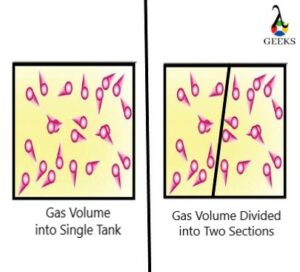
As dealing only with intensive properties such as temperature is much more effortless, we can eliminate the mass while conducting any thermodynamic investigation.
The volume of water in each division is one half of the volume of the water in the whole tank. The change in the volume of a gas arises as the amount of matter of gas is distributed. So, the volume quantity is still an extensive property even if it is changed.
If we carry the square root of the volume, its value is neither extensive nor intensive. That’s how even though it is often suitable to express any physical quantities as intensive or extensive, they don’t fall under those classifications.
Read more about Physical Change Heat Examples
Also Read:
- What is wet coefficient of friction
- Why static friction is greater than kinetic
- What is the law of reflection
- Dynamic equilibrium examples
- How to find static equilibrium
- How to calculate kinetic friction
- Find dynamic equilibrium
- Factors affecting solubility
- Semiconductors examples
- Telescopic sights

Hello, I’m Manish Naik completed my MSc Physics with Solid-State Electronics as a specialization. I have three years of experience in Article Writing on Physics subject. Writing, which aimed to provide accurate information to all readers, from beginners and experts.
In my leisure time, I love to spend my time in nature or visiting historical places.
Looking forward to connecting you through LinkedIn –